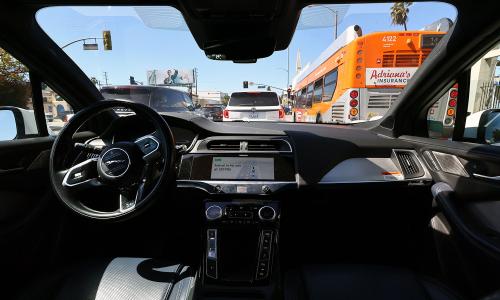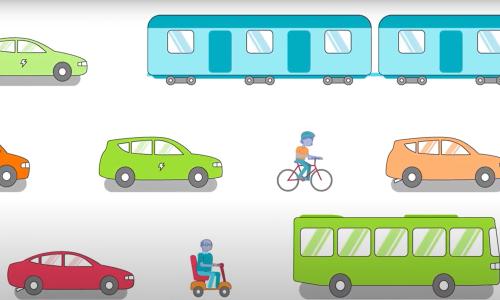Self-driving vehicles are cars or trucks in which human drivers are never required to take control to safely operate the vehicle. Also known as autonomous or “driverless” cars, they combine sensors and software to control, navigate, and drive the vehicle.
Currently, there are no legally operating, fully-autonomous vehicles in the United States. There are, however, partially-autonomous vehicles—cars and trucks with varying amounts of self-automation, from conventional cars with brake and lane assistance to highly-independent, self-driving prototypes.
Though still in its infancy, self-driving technology is becoming increasingly common and could radically transform our transportation system (and by extension, our economy and society). Based on automaker and technology company estimates, level 4 self-driving cars could be for sale in the next several years (see the callout box for details on autonomy levels).
Layers of autonomy
Different cars are capable of different levels of self-driving, and are often described by researchers on a scale of 0-5.
- Level 0: All major systems are controlled by humans
- Level 1: Certain systems, such as cruise control or automatic braking, may be controlled by the car, one at a time
- Level 2: The car offers at least two simultaneous automated functions, like acceleration and steering, but requires humans for safe operation
- Level 3: The car can manage all safety-critical functions under certain conditions, but the driver is expected to take over when alerted
- Level 4: The car is fully-autonomous in some driving scenarios, though not all
- Level 5: The car is completely capable of self-driving in every situation
How they work
Various self-driving technologies have been developed by Google, Uber, Tesla, Nissan, and other major automakers, researchers, and technology companies.
While design details vary, most self-driving systems create and maintain an internal map of their surroundings, based on a wide array of sensors, like radar. Uber’s self-driving prototypes use sixty-four laser beams, along with other sensors, to construct their internal map; Google’s prototypes have, at various stages, used lasers, radar, high-powered cameras, and sonar.
Software then processes those inputs, plots a path, and sends instructions to the vehicle’s “actuators,” which control acceleration, braking, and steering. Hard-coded rules, obstacle avoidance algorithms, predictive modeling, and “smart” object discrimination (ie, knowing the difference between a bicycle and a motorcycle) help the software follow traffic rules and navigate obstacles.
Partially-autonomous vehicles may require a human driver to intervene if the system encounters uncertainty; fully-autonomous vehicles may not even offer a steering wheel.
Self-driving cars can be further distinguished as being “connected” or not, indicating whether they can communicate with other vehicles and/or infrastructure, such as next generation traffic lights. Most prototypes do not currently have this capability.
Impacts
The costs and benefits of self-driving cars are still largely hypothetical. More information is needed to fully assess how they’ll impact drivers, the economy, equity, and environmental and public health.
Safety is an overarching concern. Many thousands of people die in motor vehicle crashes every year in the United States (more than 30,000 in 2015); self-driving vehicles could, hypothetically, reduce that number—software could prove to be less error-prone than humans—but cybersecurity is still a chief concern.
Equity is another major consideration. Self-driving technology could help mobilize individuals who are unable to drive themselves, such as the elderly or disabled. But the widespread adoption of autonomous vehicles could also displace millions of people employed as drivers, negatively impact public transportation funding, and perpetuate the current transportation system’s injustices.
Environmental impacts are a serious concern, and a major uncertainty. Accessible, affordable, and convenient self-driving cars could increase the total number of miles driven each year. If those vehicles are powered by gasoline, then transportation-related climate emissions could skyrocket. If, however, the vehicles are electrified—and paired with a clean electricity grid—then transportation emissions could drop, perhaps significantly.
To the extent that electrified self-driving cars enable more shared rides (for example, through services such as Lyft or Uber), emissions could drop even further.
The Union of Concerned Scientists has worked on transportation-related policy issues for decades, and advocates for equitable, low-pollution vehicles, fuels, and infrastructure. In February 2017 we released a policy brief that outlines the challenges and benefits of self-driving technology, and that includes seven principles for policy makers, companies, and other stakeholders to use as guides. You can be involved.





